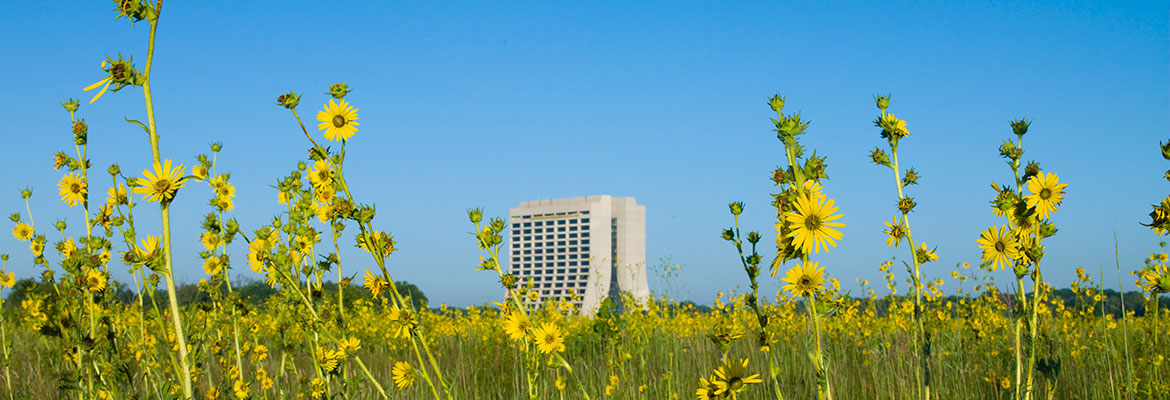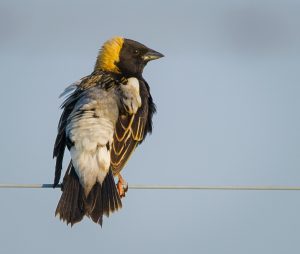Non-prairie grassland communities are generally described as old fields and have become established on fallow agricultural fields or where pasture grasses were planted prior to the existence of Fermilab. These grasslands are composed of non-native, cool-season grasses, such as orchard grass (Dactylis glomerata), tall fescue (Festuca arundinacea), and Hungarian brome (Bromus inermis), with occasional forbs and annual weeds. These communities also include invasive species such as crown vetch (Securigera varia), field thistle (Cirsium arvense), and tall goldenrod (Solidago altissima). Soils are typically disturbed clay-loam with medium soil moisture. Because of the short stature of the vegetation, some native grassland birds nest in old-field grasslands. A varied approach to managing old-field grasslands in order to optimize habitat structure includes grazing, mowing, haying and occasional prescribed burning.
The Eola Road Grasslands, totaling 500 acres, are the primary old-field grassland habitat at Fermilab. These grasslands are mowed yearly or on a biennial basis after July 15 to accommodate grassland bird nesting, and some are burned.


